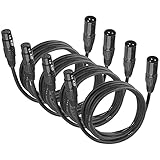When it comes to professional lighting, there are two main types of control systems: XLR vs DMX. Both have their pros and cons, so it’s important to know which one is right for your needs. Here’s a quick overview of each type of system to help you make the best decision for your setup.
XLR systems are the most common type of professional lighting control. They use three-pin XLR connectors to connect lights to controllers. Both have their pros and cons, but which one is the best for your needs? Let’s take a look.
What Is XLR?
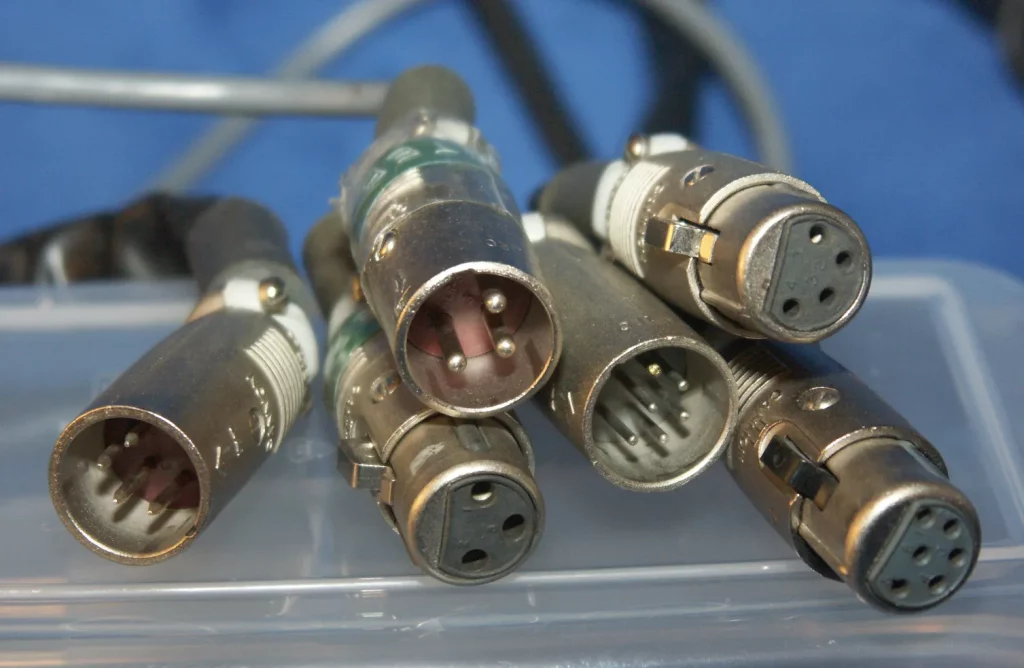
XLR is a type of cable that is commonly used in audio applications. It is a balanced cable that offers low noise and interference. XLR cables are available in a variety of different lengths and can be used to connect a variety of different devices together.
XLR cables are made up of three conductors: a positive, a negative, and a ground. The positive and negative conductors carry the signal, while the ground conductor helps to reduce interference. XLR cables are shielded, meaning that they have an outer layer of insulation that helps to protect the signal from interference.
XLR cables are available in a variety of different lengths, ranging from 1 to 100 feet. They are also available in different gauge sizes, which refers to the thickness of the wires inside the cable. The thicker the wire, the better the sound quality will be.
When choosing an XLR cable, you must consider the length and gauge size you need. It is also important to ensure that the XLR cable is compatible with the equipment you are using.
- Pro-grade microphone cord (microphone wire) is designed for microphones or other professional recording, mixing, and lighting equipment with the 3 pin XLR connectors
- Convenient and cost-effective 2-pack XLR patch cable provides spare or replacement XLR to XLR cable (XLR male to female cable) to use on a set of microphones or on different systems
- Balanced mic cable XLR with soft PVC jacket is constructed with oxygen-free copper (OFC) conductors for delivering pristine sound
- Copper braided shielding of these mic cables (XLR cables) provides maximum cancellation of hum and noise; Polyethylene insulation improves high frequency response. Heavy duty metal connectors with molded strain relief and grip treads increase durability and help easy plugging and unplugging with this XLR microphone cable (XLR mic cable)
- The mic cord (XLR cord) is compatible with equipment with 3-pin XLR connectors such as shotgun microphones, studio harmonizers, mixing boards, patch bays, preamps, speaker systems, and stage lighting with an XLR cable port
- IN THE BOX: 6-foot XLR male to female microphone cable for XLR-compatible PA systems, speakers, and other sound equipment
- CLEAR TRANSMISSION: All-copper conductors with inner copper spiral shielding to reduce noise interference
- DURABLE DESIGN: Zinc alloy 3-pin connectors with nickeling; protective metal housing and flexible 6.0mm PVC jacket
- USES: Designed for studio recording and live sound
- Balanced Audio cables utilize impedance balanced lines that reduce EM and RF noise.
- Balanced cables have a separate braided Shield to provide additional resistance to interference without modulating the interference into the signal. |Prevents ground loop issues.
- Xlr Male to female cables continue our tradition of bringing the highest quality cables at the best prices.
- These cables feature thick, heavy gauge wires, gold Plated connectors and sturdy connector housings.
- Connector Type: Hdmi To Dvi
- Guaranteed for Life
- Three-pin XLR connectors
- Professional OFC Noiseless Instrument Cable
- Ideal for Studio and Live Applications
- High quality rugged metal connectors and oxygen-free copper cores, which will reduce noise and enhance signal.
- Durable and Flexible: Rugged nylon braided jacket, metal plugs and gold-plated pins.
- Clear Sound: Optimized shielding reduces electromagnetic noise interference.
- Plug and Play: Works with any XLR-compatible audio equipment.
History and Manufactures
Amphenol Corporation designed the XLR connector in the early 1970s to provide a high-quality, locking audio connector. The design has been widely copied but remains the standard for professional audio applications.
The connector is usually found on microphones, professional audio equipment, and high-end consumer audio equipment. Amphenol is one of the largest manufacturers of XLR connectors. Other notable manufacturers include Neutrik, Switchcraft, and Xlr industries.
Design
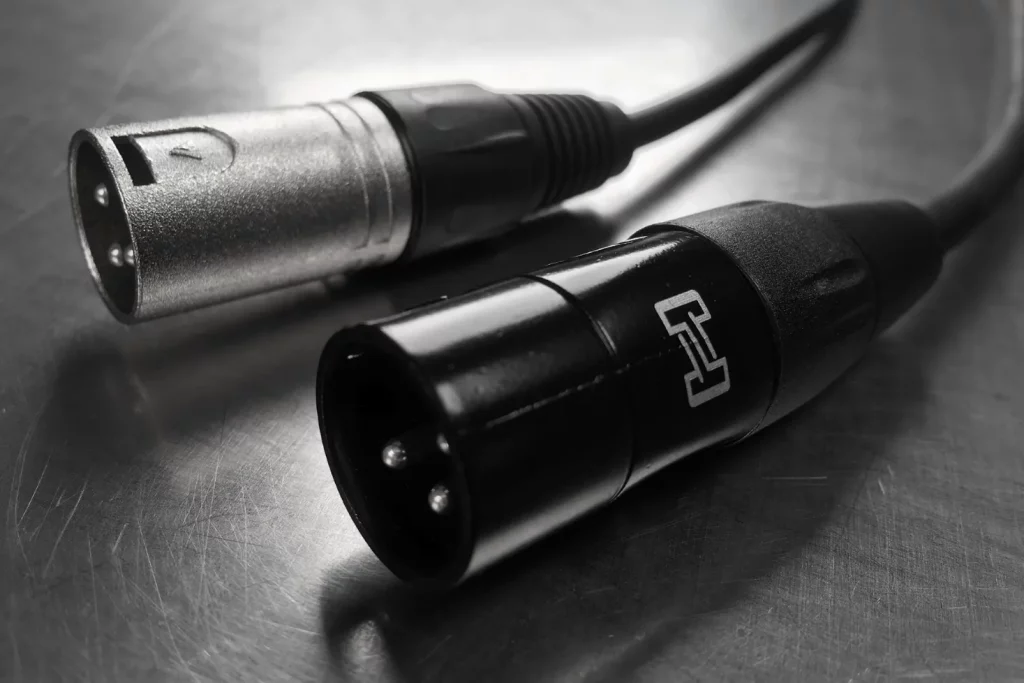
The design of XLR connectors dates back to the 1930s when they were used in telephone switchboards. They were originally designed for balanced audio signals but have found widespread use in a variety of applications. XLR connectors are available in three sizes: 3-pin, 5-pin, and 7-pin.
The most common size is the 3-pin connector, which is used for balanced audio signals. The 5-pin connector is used for balanced audio signals and DMX lighting control signals. The 7-pin connector is used for balanced audio signals and Ethernet data signals.
XLR connectors are designed to be locking connectors. The locking mechanism consists of a latch that engages a slot in the connector body. The latch is released by depressing a button on the connector body. XLR connectors are available in male and female versions. The male connector has pins that mate with the female sockets. The female connector has sockets that mate with the male pins.
XLR connectors are used in a variety of applications, including audio, video, and data. They are commonly used in professional audio applications, such as microphones and PA systems. They are also commonly used in lighting control systems.
The design of XLR connectors is unique in that the male and female plugs are mirror images of each other. The male plug’s pins fit into the female plug’s sockets with a 1/4 inch (6.35 mm) diameter and are connected with a twist-lock mechanism. This prevents accidental disconnection while still allowing quick and easy connections.
The XLR connector is also polarized, with the plug having a positive and negative terminal, and the socket has a corresponding positive and negative terminal. This ensures that the signal will be transmitted correctly and without interference.
The XLR connector is a versatile and essential piece of audio equipment used in various applications. From professional recording studios to live concert venues, XLR connectors are used to connect microphones, mixers, and other audio equipment.
They are also commonly used in home theater systems and other consumer electronics. Whether you are a professional audio engineer or a casual listener, understanding the basics of XLR connector design can help you get the most out of your sound system.
Applications
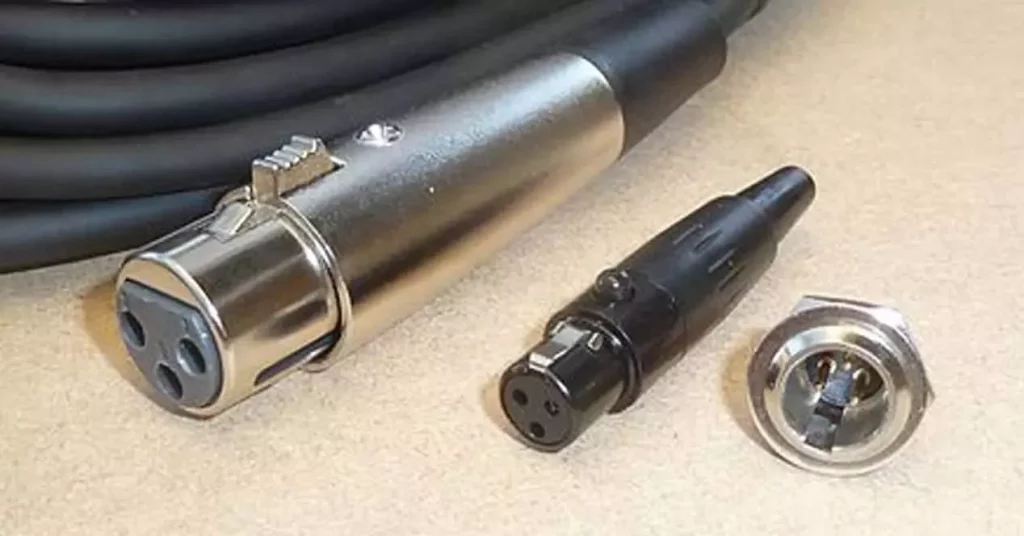
XLR cables are a type of cable that is used to carry an audio signal. They are often used in professional audio applications because they offer superior sound quality and can handle more power than other types of cables. XLR cables are also durable and immune to interference, making them ideal for use in live settings.
Some common applications for XLR cables include connecting microphones to mixers, connecting powered speakers to an amplifier, and connecting an instrument to a PA system. This helps to minimize noise interference. XLR cables are also shielded, which helps to protect the signals from external sources of electromagnetic interference.
Pattern
The article paints a bleak picture of the future for XLR holders and the entire cryptocurrency market. The author provides no viable solution to this problem and offers little hope for the future. While it is possible that things may improve in the coming months or years, it seems more likely that XLR will continue to decline in value. This is not a good investment opportunity.
XLR is still in its early developmental stages, and it’s too soon to tell how this new digital asset will fare in the long run. However, there are some key factors that could play a role in XLR’s success or failure. For example, the level of user adoption, the development of supporting infrastructure and services, and government regulation can impact XLR’s future. Only time will tell what direction XLR will take, but it’s certainly an asset worth watching in the months and years ahead.
XLR cables provide a more durable and reliable connection for audio equipment than the traditional 1/4″ phone connector. They are also less susceptible to interference, making them ideal for use in live performances or other settings where sound quality is critical. While XLR cables may be more expensive than their 1/4″ counterparts, they offer greater performance and durability, making them worth the investment for serious audio enthusiasts.
What Is DMX ?
- The Cable Matters DMX Cable is designed for controlling stage lighting, strobe lights, and other theater, concert, and performing arts lighting equipment; Use the DMX controller cable to connect studio lighting to computer control systems
- Lighting cable DMX supports connecting lights, controllers, and other systems at a distance; DJ light controller cable is ideal for connecting stage lighting systems at a large performance venue; 3 pin male to female DMX cable supports connecting DMX OUTPUT sockets to DMX INPUT connectors on DMX512 controller systems to stage lights
- EBU cable features additional shielding and better impedance for transmitting digital lighting signals between equipment and a controller system; AES cable is compatible with industry standard equipment; 22 AWG wire of the lighting cable ensures reliable signal transmission; High build quality ensures reliability and durability of the AES/EBU cable for the most demanding venues
- 3 pin DMX cable also functions as an XLR cable and microphone cable; Connect microphones and other audio equipment with an XLR microphone cable connector; XLR male to female cable supports standard musical equipment
- Cost-effective 2-pack of stage light cables supports two devices; Connect two lights with the DMX light cable or keep a spare on hand
- ✔Premium Material: JLPOW 25ft DMX Cable constructed with oxygen-free copper, copper conductors and inner copper braided shielding.
- ✔Durable Design: Gold-plated XLR pins ,Sturdy soldering point, Heavy duty Metal Connectors with molded strain relief increase durability and help easy plugging and unplugging.
- ✔Soft PVC Jacket: More flexible than other brands,make it malleable for easy routing,smooth pickup when finished.
- ✔DJ Essential: JLPOW 25 ft XLR Male to Female DMX Cable for various Stage lights: moving head light, par lights, spotlight ,up lighting with XLR input and output.
- ✔100% No Risk: 30 days money back,12 months quality warranty and professional customer service.
- 【Professional Construction】Our 6.5ft / 2m DMX cable constructed with duo foil and copper braided shielding, protect well wires and prevent signal interference during a whole show.
- 【Metal Connector】3-Pin XLR DMX cable, male to female with sturdy metal connectors, ensure a sturdy connection, easy plugging and unplugging.
- 【Flexible PVC Jacket】With upgraded soft PVC jacket, durable and prevent kinking, easy to use and coil. When it is not in use, coil it for easy storage.
- 【Wide Application】Perfect suitable for all fixtures with DMX512 signal likes; moving head light, LED Par light, LED effect light and other stage, audio & dj lighting.
- 【Package & Warranty】10PCS 6.5ft / 2m DMX cables in packing with 3 years warranty. If you have any questions, please feel free to contact with us!
- 3-pin DMX Signal Cable: Three-core shielded signal line, 3 meters (10 feet) long, flexible PVC sheath, high-purity oxygen-free copper core. The texture is excellent, and the sound quality is shocking! Signal Cable can protect the XLR connector on the Microphones or Stage Lights from continuous pulling damage. It has strong flexibility and elasticity, so you don't need to worry about knotting it for storage when curling.
- Stable Transmission: The standard 3-pin XLR socket is firmly inserted into your device and has a buckle design, for smooth insertion and removal. So you can easily move the device on stage without worrying about serious cracks or noise reduction, and it won't fall off.
- Super Long Service Life: service life is up to 80,000 hours. There are three copper core wires, and each copper core wire has several copper wires. DMX512 signal loss is low, almost no attenuation, the wire is soft, foldable and will not break.
- Widely Used: DMX signal cable can be used for Microphones, mixers, power amplifiers, guitars, Effects, equalizers, compressors, crossovers, stage audio, press conferences, KTV, professional amplifiers, stage lighting, par lights, home theaters and other supporting related wires.
- Note: Your stage lighting must be equipped with the same plug and socket plug, otherwise it cannot be used.
- 【Professional Construction】Our 3.2ft / 1m DMX cable constructed with duo foil and copper braided shielding, protect well wires and prevent signal interference during a whole show.
- 【Metal Connector】3-Pin XLR DMX cable, male to female with sturdy metal connectors, ensure a sturdy connection, easy plugging and unplugging.
- 【Flexible PVC Jacket】With upgraded soft PVC jacket, durable and prevent kinking, easy to use and coil. When it is not in use, coil it for easy storage.
- 【Wide Application】Perfect suitable for all fixtures with DMX512 signal likes; moving head light, LED Par light, LED effect light and other stage, audio & dj lighting.
- 【Package & Warranty】10PCS WorldLite 3.2ft / 1m DMX cables in packing with 3 years warranty. If you have any questions, please feel free to contact with us!
Design
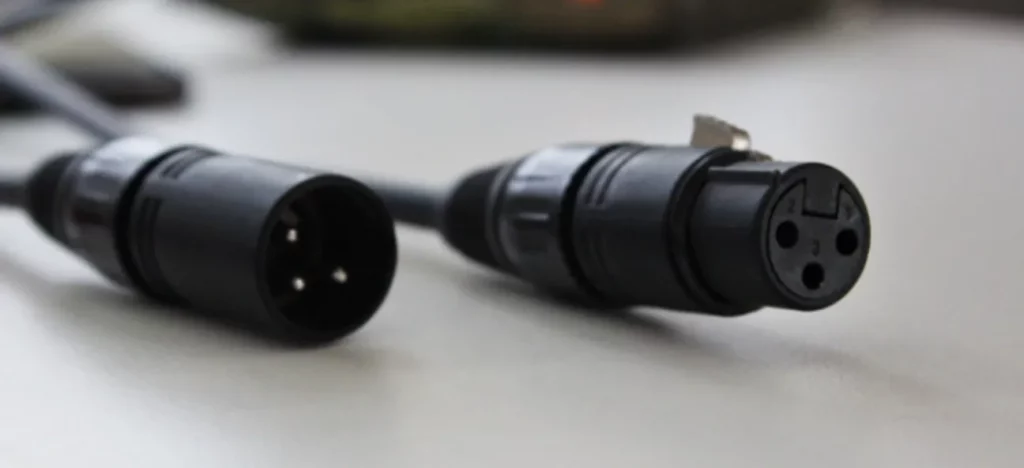
DMX is a digital communication standard for controlling lighting equipment. It uses a special cable with five pins to carry data between devices. The cables are typically used in stage lighting and other professional applications.
DMX cables are available in a variety of lengths and can be daisy-chained to connect multiple devices. The cables are also relatively inexpensive, making them a popular choice for budget-conscious users. DMX cables are special cables that are used to send digital signals between lighting fixtures and controllers.
DMX has been around for a while and is still being used in many different ways. The design of DMX can be simple or complex, depending on the needs of the user. This article has looked at some of the more common uses for DMX and how to create a basic DMX signal. We also discussed some tips on how to get the most out of your DMX system. With a little practice, you should be able to create any type of DMX signal that you need.
They come in a variety of different lengths and are typically used in concert lighting or stage lighting applications. DMX cables are also known as “XLR cables” because they use XLR connectors.
When shopping for DMX cables, paying attention to the length and number of pins is important. Some cables are designed for specific applications, so be sure to read the product descriptions carefully. With a little bit of research, you can find the perfect cable for your needs.
DMX cables are used to transmit digital data between devices. They are typically used in stage lighting and effects applications, where precise timing and control over individual lights is required. DMX cables come in a variety of connector types, including 3-pin XLR, 5-pin XLR, and RJ45. They are available in various lengths, from 3 feet to 100 feet. DMX cables are also used in some audio applications, such as digital mixing consoles.
Designing an effective DMX can be daunting, but if you break it down into manageable chunks, it becomes much more manageable. In this article, we’ve outlined some essential tips to get you started on your way to designing the perfect DMX for your business. By following these guidelines and using the right tools, you should be well on your way to success.
The first step is understanding what DMX is and how it can be used to benefit your business. Next, you need to determine what goals you want to achieve with your DMX design. Once you have a clear understanding of these two things, you can begin to develop a plan for your design.
After you have a plan, selecting the right software and hardware for your needs is important. Once you have everything in place, you can start to build and test your DMX design. With a little effort and patience, you should be able to create a design that meets your business goals and provides a great user experience.
History

DMX cables are used to control stage lighting and effects. They are also used in theatrical productions and other live events. DMX cables send digital data between devices, allowing for precise communication between them. DMX cables have been used since the 1980s, and their popularity has grown in recent years.
DMX cables are typically made of copper or aluminum and can be either shielded or unshielded. Shielded DMX cables are less susceptible to interference but are also more expensive. Unshielded DMX cables are less expensive but more susceptible to interference. DMX cables are available in a variety of sizes, from 3-pin to 5-pin. The most common size is 5-pin, but 3-pin DMX cables are also available.
DMX cables typically have a male XLR connector on one end and a female XLR connector on the other end. DMX cables can be used to connect devices such as controllers, dimmers, and fixtures. DMX cables are also used to connect DMX devices to each other. DMX cables are typically black but can also be found in other colors.
DMX In Practice
DMX is an extremely powerful digital marketing tool that can help you reach a large audience quickly and easily. It’s no wonder many businesses are using it to drive website traffic and increase sales. In this article, we’ve outlined the basics of DMX and how you can use it in your own business. We also shared tips on getting the most out of your DMX campaigns. So what are you waiting for? Start using DMX today and see the results for yourself!
DMX is a versatile lighting control protocol that can be used in a variety of ways to achieve different results. By understanding the basics of how DMX works, you can begin to experiment with it and see what kinds of effects you can create. In this article, we’ve shown you some simple examples of how DMX can be used in practice. With a little creativity, the possibilities are endless. So go out there and start exploring!
Wireless Operation
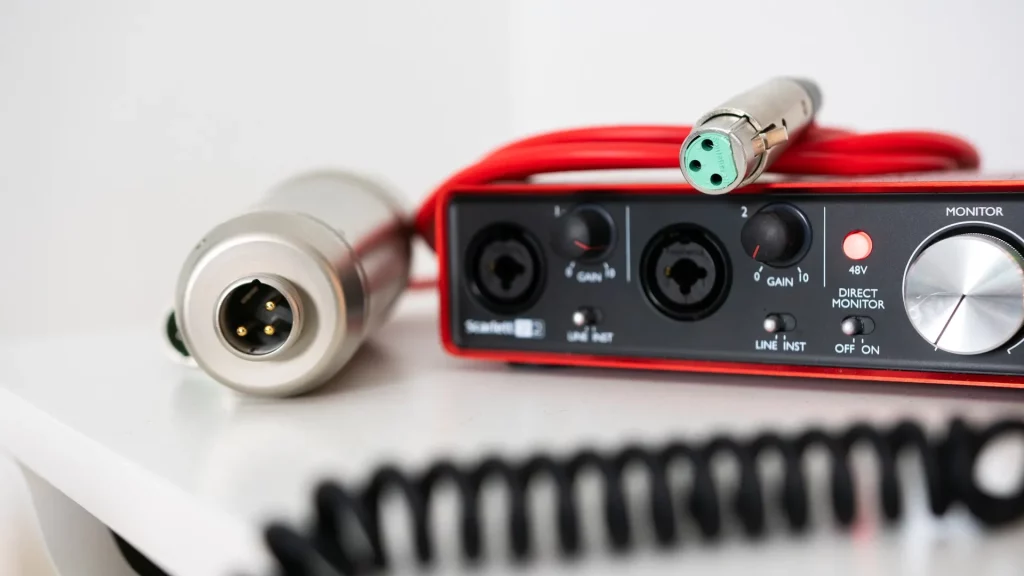
DMX is known as a standard for digital audio transmission over Ethernet. It was developed by the USITT (United States Institute of Theater Technology) and ratified in 1986. DMX512-A, the latest revision, defines how devices are connected and operate wirelessly. This opens up many possibilities for lighting designers and technicians who want to control fixtures without physically running cables between them. This article will cover how DMX works and what you need to know to get started using it in your projects.
DMX is a digital protocol that allows for the control of multiple lighting fixtures at once. Each fixture is assigned a unique address, and commands are sent to the fixtures in a specific order. DMX is most commonly used in theater and concert lighting but can also be used for architectural and landscape lighting.
Wireless DMX uses radio frequencies to transmit data between fixtures and controllers. This allows for greater flexibility in terms of placement and eliminates the need for long runs of cable. Wireless DMX is also useful in situations where it would be difficult or impossible to physically run cables, such as outdoors or in large venues.
XLR Vs DMX Comparison
When it comes to lighting, people use a few different types of systems. Some popular ones include XLR and DMX. Each of these systems has its own benefits and drawbacks, which can make it difficult to decide which one is right for your needs. In this article, we will explore the differences between XLR and DMX lighting systems so that you can decide which one is right for you.
Durability And Reliability
XLR lighting systems are known for their durability and reliability. They are often used in professional settings, such as concerts and nightclubs. XLR lights are also very easy to set up and take down, making them a good option for people new to using lighting systems. However, XLR lights can be more expensive than other types of lighting systems.
DMX lighting systems are known for their flexibility and versatility. They can be used for a variety of different applications, including stage lighting, architectural lighting, and even special effects. DMX lights are also very easy to control, making them a good choice for people looking for a system that is easy to use. However, DMX lights can be more difficult to set up than other types of lighting systems.
Design
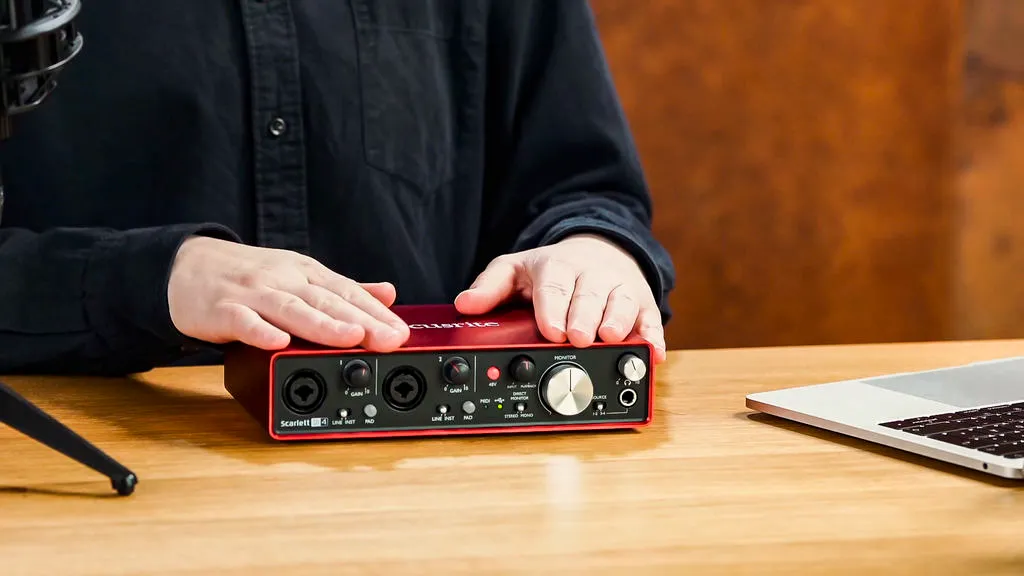
XLR systems use a three-pin connector to carry digital audio and control signals. DMX systems use a five-pin connector to carry digital control signals. XLR systems are typically used in live sound applications, while DMX systems are used in theatrical and architectural lighting applications.
XLR systems are typically more expensive than DMX systems, but they offer a number of advantages. XLR systems are easier to use and more flexible, allowing longer cable runs. DMX systems are typically more reliable, but they can be more difficult to use.
So, which system is right for you? It depends on your application. If you need a flexible and easy-to-use system, an XLR system is a good choice. If you need a more reliable system, a DMX system is a better choice.
Difference Between XLR And DMX
It is a common question among audio enthusiasts – are DMX and XLR connectors the same? As it turns out, the answer is a little more complicated than a simple yes or no. While the two connector types share some similarities, they also have some key differences. In this article, we will take a closer look at both DMX and XLR connectors to see what sets them apart.
DMX connectors are most commonly used in professional audio applications. They are designed to carry a digital signal, and as such, they are typically found on higher-end equipment. DMX connectors are also usually smaller than XLR connectors, which can make them more difficult to work with.
It’s easy to confuse XLR and DMX connectors, as they both have three pins and look very similar. However, they are not interchangeable. Here is a breakdown of the differences between the two types of connectors:
DMX connectors are used to carry digital audio signals, while XLR connectors are used to carry analog audio signals. DMX connectors have a locking mechanism to ensure a secure connection, while XLR connectors do not. DMX connectors are also designed to carry a higher voltage than XLR connectors.
XLR connectors are more commonly used than DMX connectors, as they can be used for both analog and digital audio signals. However, DMX connectors are growing in popularity as they offer a more secure connection and can carry a higher voltage. When choosing between the two types of connectors, it is important to consider what type of audio signal you will be carrying and what equipment you will use.
FAQs
What is the difference between DMX and XLR?
DMX cables carry signals in one direction, and XLR cables carry signals in two directions.
XLR cables are also able to handle more power than DMX cables. This makes them a better choice for live performances where a lot of equipment runs simultaneously. DMX cables are most commonly used in theatrical settings or when a computer controls light fixtures.
How do I know if I need DMX or XLR?
DMX cables are generally used when there is a need to control light fixtures individually. If you have a large number of light fixtures and/or are using equipment that requires a lot of power, then XLR cables would be the better choice. Otherwise, DMX cables will work just fine for most applications.
Can I use DMX cables with XLR equipment?
Yes, DMX cables can be used with XLR equipment. However, XLR cables are not compatible with DMX equipment. If you need to use both types of equipment, you will need to have two sets of cables. One for DMX and one for XLR. This is because the two types of equipment use different types of connectors. DMX uses 3-pin connectors, and XLR uses 5-pin connectors.
Conclusion
DMX vs XLR cables are both used for sending audio signals, but they have different purposes. DMX cables are typically used in stage lighting and sound systems, while XLR cables are more commonly used in studio recording and live sound applications. The main difference between the two types of cables is that DMX cables use a digital signal to send data, while XLR cables use an analog signal.
So, which one is better? It really depends on your needs. If you need to send digital data, then you’ll need a DMX cable. If you’re just sending audio signals, then an XLR cable will probably suffice.










